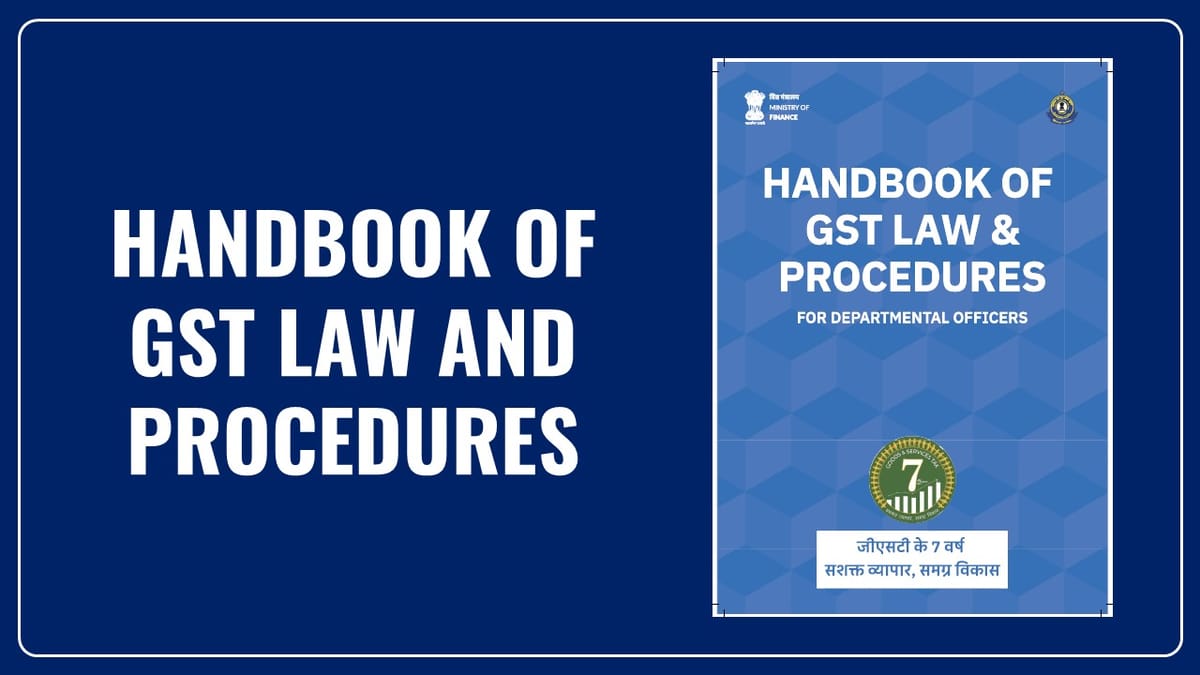Reetu | Aug 16, 2024 |

Finance Ministry released Handbook of GST Law and Procedures
The Ministry of Finance has released a Handbook of GST Law and Procedures for Departmental Officers.
This Chapter provides the scope and extent of GST, for a better understanding of the tax structure under the GST law. The topics covered in this Chapter provide the general idea of the taxation policy and the authority of law, which will aid in the daily working of departmental officers.
Goods and Services Tax (hereinafter referred to as “GST”), introduced in India with effect from 01.07. 2017, is a comprehensive destination-based indirect Value Added Tax on the supply of goods as well as services.
Prior to the introduction of GST, both the Centre and States were empowered to impose indirect taxes on goods. The Centre imposed Central Excise duty on products manufactured, while states imposed sales tax/VAT on goods sold. In addition to goods, services were subject to service tax, which could only be levied by the Centre.
The idea of ‘one tax for the entire nation’ was conceptualized and an Empowered Committee of State Finance Ministers was formed to design the road map for GST. The Empowered Committee advocated a dual GST model for the country, with GST divided into two components: Central GST (CGST) imposed and collected by the Centre and State GST (SGST) levied and collected by the different States, which would cover the majority of indirect taxes levied. For inter-state transactions (supply from one state to another), the Centre was advised to levy an Integrated GST (IGST).
GST being a uniform tax system for the entire country, required a constitutional amendment. As such Bill in this regard was introduced in both Houses of Parliament. After the Bills were passed by both Houses, the Bill received assent from the President of India on 08.09.2016 and was also notified on the same day as The Constitution (One Hundred and First Amendment) Act, 2016.
The structure of GST is such that the Central Government and the State Governments have framed GST laws together. Some of the features include –
(a) Uniform law across the country: The GST law is based on the Model GST law drafted by the Centre and the States. Therefore, the law is more or less identical throughout the country.
(b) Common Procedures: The procedures and formats as prescribed by the CGST and the SGST are identical.
(c) Common Compliance Mechanism: GSTN, promoted jointly by the Central and State Governments, is the common compliance portal for GST.
The aim of GST was tax integration, tax simplification, promotion of Ease of Doing Business and to instill the feeling of ‘One nation, One tax’.
A new Article 279A was inserted in the Constitution of India, which prescribes the constitution of a ‘GST Council’ for making recommendations on the governance of the entire law relating to the GST Act.
To Read More Download PDF Given Below:
In case of any Doubt regarding Membership you can mail us at contact@studycafe.in
Join Studycafe's WhatsApp Group or Telegram Channel for Latest Updates on Government Job, Sarkari Naukri, Private Jobs, Income Tax, GST, Companies Act, Judgements and CA, CS, ICWA, and MUCH MORE!"